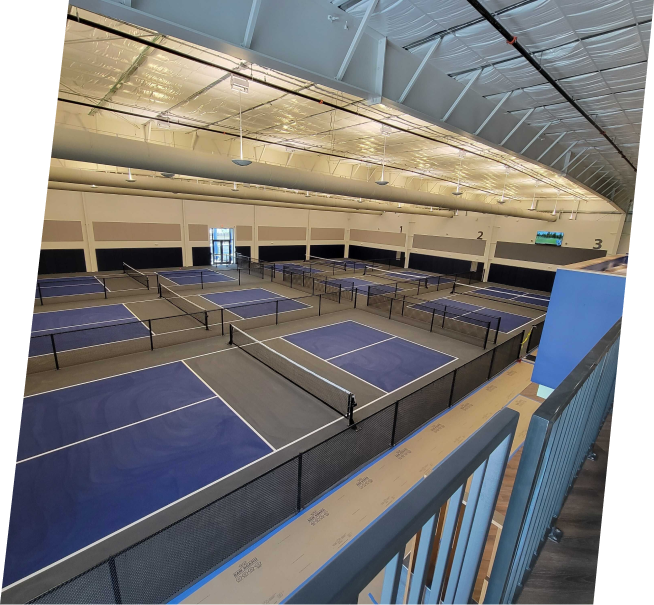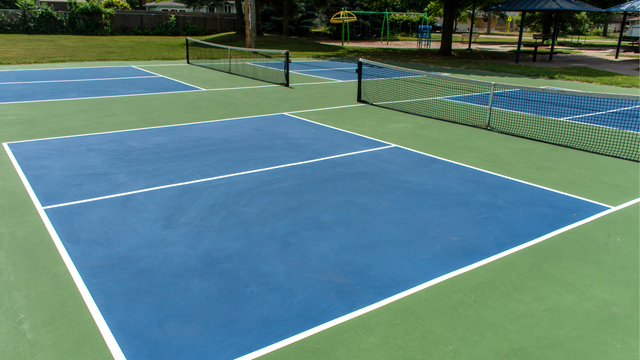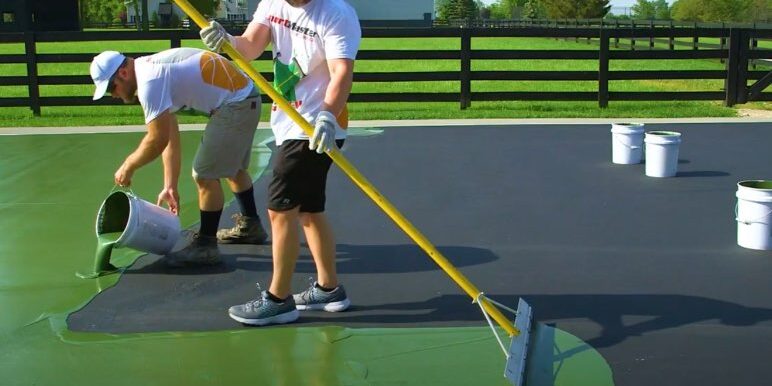Exactly Why Your Following Pickleball Court Need To Be Constructed by a Specialist Contractor
A Comprehensive Guide to Designing the Perfect Pickleball Court for All Ability Levels
Creating a pickleball court that satisfies players of differing ability degrees necessitates a diverse method, including vital elements such as court dimensions, surface area materials, and ease of access features. The balance between functionality and safety is extremely important, as is the development of an inviting setting for both participants and spectators. With the best design selections, one can promote an engaging ambience that promotes satisfaction and skill growth. Pickleball court contractor. Nevertheless, the intricacies associated with attaining this balance are often ignored. What specific considerations must be focused on to ensure a successful application?

Comprehending Court Capacities
Comprehending the measurements of a pickleball court is important for both gamers and designers, as these specifications guarantee a consistent and reasonable playing experience. A basic pickleball court measures 20 feet vast by 44 feet long for both singles and doubles play. The court is separated right into two equal fifty percents by an internet that stands 36 inches high at the sidelines and 34 inches at the center.
Trick functions of the court consist of the non-volley zone, commonly referred to as the "cooking area," which prolongs 7 feet from the web on both sides. This area is important for regulating player activity and volleying, guaranteeing critical play. In addition, the service locations on each side of the court are vital, gauging 10 feet large and 15 feet deep, designed to accommodate appropriate offering techniques.
Surrounding the court, a location of at the very least 10 feet must be designated as the security area, allowing players sufficient area to relocate and prevent injuries during play. Following these measurements not only fosters fair competitors however also advertises safety and security and enjoyment for all participants, making it crucial for any pickleball court design.
Selecting the Right Surface
The option of playing surface area for a pickleball court significantly influences the game's dynamics and player experience. Choosing the proper product is critical for making certain gamer efficiency, convenience, and security. Typical surfaces consist of asphalt, concrete, and specialized sports flooring.
Asphalt is a preferred option because of its affordability and resilience. It provides a constant playing surface area but can be tough on joints over prolonged play. Concrete, while comparable in toughness, provides marginal versatility, possibly resulting in raised effect on gamers' bodies.
For a more supported experience, numerous centers opt for customized sporting activities flooring, such as modular floor tiles or synthetic surface areas. These materials often consist of shock-absorbing homes, lowering the risk of injuries and boosting gamer convenience. In addition, such surfaces can improve ball bounce uniformity, which is necessary for fair play.
When selecting a surface, think about variables such as environment, maintenance requirements, and the strength of play. An appropriate surface area not just boosts gameplay yet also contributes to the longevity of the court itself. Ultimately, understanding the nuances of different products will aid in creating an optimum pickleball environment customized to numerous skill levels.
Optimum Court Format
An optimum court design is important for optimizing both gamer performance and viewer enjoyment in pickleball. The measurements of a common pickleball court are 20 feet large by 44 feet long for doubles play, keeping a clear boundary that boosts gameplay. The internet, placed at 36 inches high at the sidelines and 34 inches in the center, is essential for keeping the dynamics of the game.
Incorporating assigned locations around the court for players to relocate freely is essential. A minimum of 10 feet of clearance on all sides of the court is recommended to prevent accidents and provide area for viewers. Additionally, alignment plays a significant function; the court should ideally be straightened north-south to reduce the effect of sunlight glow on gamers during height hours.
Effective viewer positioning is just as essential. Raised watching areas or bleachers positioned behind the sidelines can boost the experience while ensuring safety. Finally, clear and noticeable court markings help in gameplay, with contrasting shades for boundaries and non-volley zones that delineate vital locations for players. Overall, a well-designed court layout fosters an interesting setting for both gamers and spectators.

Availability Considerations
When making a pickleball court, making certain ease of access for all gamers, consisting of those with specials needs, is critical. An attentively developed court can cultivate inclusivity and encourage involvement from individuals of varying capacities.

Gain access to courses to the court must also be thoroughly prepared. Guarantee that pathways resulting in the court are broad enough for wheelchair users and are geared up with ramps where necessary. Signs needs to be clear and huge enough to be easily reviewed.
In addition, seating locations must be created to permit easy accessibility to and from the court. This consists of offering designated rooms for spectators that may have movement challenges.
Last but not least, make sure that washroom centers close-by fulfill availability requirements. By considering these components, you can create a pickleball court that is inviting and usable for every person, thus advertising a diverse and lively area of players.
Maintenance and Maintenance
Proper maintenance and maintenance of a pickleball court are vital for ensuring ideal having fun problems and extending the lifespan of the facility. Routine examinations ought to be carried out to recognize and address any damages or use, such as fractures in the surface area or loosened netting. These issues, if left unattended, can negatively affect gameplay and safety and security.
Surface area upkeep is crucial; courts must be cleansed regularly to remove debris, leaves, or dust that can affect grip. For hard courts, regular pressure washing is suggested to maintain surface stability and appearances. If your court is constructed from softer products, such as asphalt, have a peek at these guys resurfacing or securing might be needed to shield versus weather-related wear.
Additionally, net elevation and stress ought to be examined routinely, as improper setups can alter gameplay. Maintaining bordering areas, consisting of secure fencing and illumination, is equally important for making certain a enjoyable and secure atmosphere.
Verdict
In conclusion, the design of an optimal pickleball court requires a careful technique that includes appropriate dimensions, suitable surface area products, and thoughtful design. By sticking to these guidelines, the perfect pickleball court can be developed, advertising pleasure and athletic development for gamers of differing skill levels.
Designing a pickleball court that provides to players of differing skill levels necessitates a complex technique, including vital components such as court dimensions, surface area materials, and ease of access attributes.Recognizing the dimensions of a pickleball court is essential for both gamers and designers, as these specs ensure a reasonable and consistent having fun experience.The selection of playing surface for a pickleball court significantly influences the video game's dynamics and player experience.An optimum court layout is crucial for maximizing both player efficiency and viewer enjoyment in pickleball. By adhering to these guidelines, the best pickleball court can be created, promoting pleasure and sports growth for players of varying skill levels.